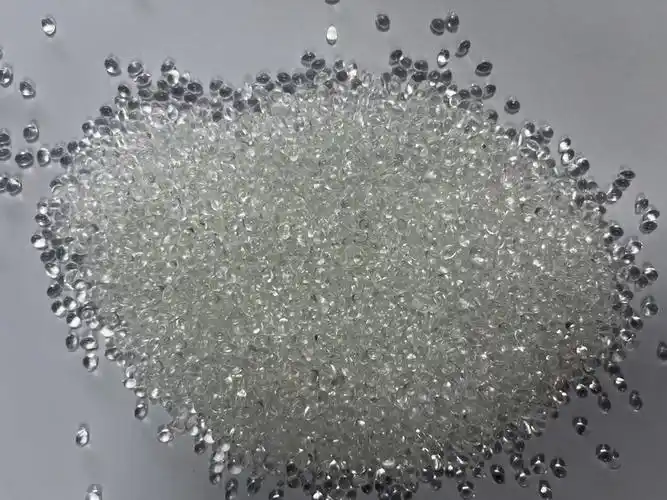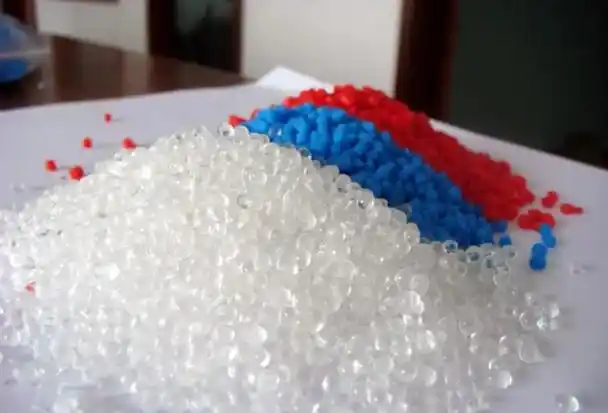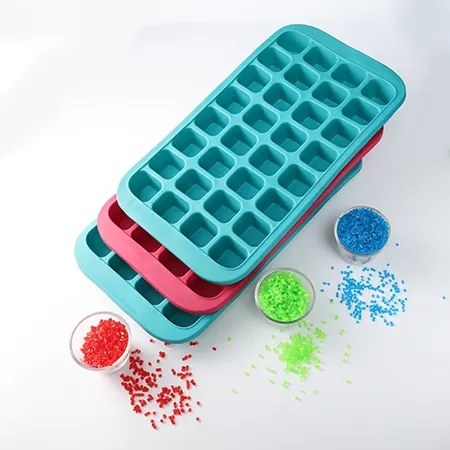As someone who’s spent years navigating the world of polymers and materials science, I’ve seen TPR (thermoplastic rubber) pop up in everything from shoe soles to phone cases. It’s a fantastic material—soft, flexible, and affordable—but it’s not without its quirks. One issue that often catches people off guard is why TPR sometimes feels oily or greasy to the touch. Whether you’re a manufacturer dealing with customer complaints or a consumer wondering why your TPR grip feels slick, I’ve been there, troubleshooting this exact problem. I once handled a batch of TPR toys that left a faint oily residue on my hands, sparking a deep dive into the issue. In this article, I’ll explain why TPR tends to “sweat” oil, whether it’s a quality concern, and how to manage or prevent it. My aim is to arm you with clear, practical insights so you can tackle this issue with confidence.

Understanding TPR and Its Oily Tendency
Let’s start by getting to know TPR. Thermoplastic rubber is a blend of polymers, typically styrene-based (like SBS or SEBS), combined with additives to achieve its rubber-like flexibility. It’s used in countless products—think yoga mats, medical tubing, or tool handles—because it’s durable, moldable, and cost-effective. But that oily feel? It’s not your imagination. TPR can exude a greasy residue due to its composition and processing, which can be a nuisance or even a dealbreaker for some applications.
The oily sensation usually comes from plasticizers or oils in the TPR formulation migrating to the surface, a process called “blooming” or “sweating.” In my experience, this issue is more common in lower-cost TPR products, but even high-quality grades can exhibit it under certain conditions. Let’s dive into the reasons behind this phenomenon and explore how to address it.
Why Does TPR Feel Oily?
1. Plasticizers and Oils in the Formulation
The flexibility of TPR often relies on plasticizers, such as mineral oils or synthetic oils, which soften the polymer. These oils can migrate to the surface over time, creating that greasy feel. Cheaper TPR grades tend to use higher levels of low-quality oils, which are more prone to blooming.
Why it happens: Plasticizers are not chemically bound to the polymer matrix, so they can slowly seep out, especially under heat or pressure.
Example: I once tested TPR shoe insoles that felt slick after a few weeks because they used excess mineral oil to cut costs.
Pro tip: Look for TPR with low-migration plasticizers or non-oil-based alternatives for reduced oiliness.

2. High Temperatures or Environmental Stress
Heat accelerates the migration of oils in TPR, making the surface feel oilier. Exposure to sunlight, humidity, or warm storage conditions can exacerbate this. I’ve seen TPR products stored in hot warehouses develop a greasy sheen faster than those kept in cooler environments.
Why it happens: Elevated temperatures increase molecular mobility, pushing plasticizers to the surface. UV light can also degrade the polymer, releasing oils.
Example: TPR car mats I worked with felt oily after being left in a parked car during summer, as the heat triggered oil migration.
Pro tip: Store TPR products in cool, dry, shaded areas to minimize oil sweating.
3. Overuse of Additives
Beyond plasticizers, TPR formulations may include fillers, stabilizers, or processing aids that contribute to oiliness. Excess additives or poor-quality ones can lead to surface blooming, especially if the formulation isn’t balanced.
Why it happens: Additives like calcium carbonate (a common filler) or low-grade stabilizers can interact with plasticizers, causing them to leach out.
Example: A TPR tool grip I evaluated felt greasy due to an overload of cheap fillers, which destabilized the material.
Pro tip: Request material safety data sheets (MSDS) to verify the additive content of TPR.
4. Manufacturing Issues
The way TPR is processed—through injection molding or extrusion—can influence oil migration. Overheating during production or inadequate cooling can trap oils in the material, which later seep out. I’ve visited factories where improper processing led to oily TPR products right off the line.
Why it happens: High processing temperatures can degrade plasticizers, making them more likely to bloom. Insufficient cooling locks in volatile oils.
Example: A batch of TPR seals I inspected was oily because the molding temperature was too high, causing oil separation.
Pro tip: Ensure manufacturers use optimized processing parameters and proper cooling cycles.

5. Material Aging
As TPR ages, its structure can break down, causing plasticizers to migrate more readily. This is especially true for products exposed to repeated stress, like bending or compression, which can squeeze oils to the surface.
Why it happens: Over time, the polymer chains degrade, reducing their ability to hold plasticizers in place.
Example: A TPR phone case I used for a year started feeling oily after constant handling, as mechanical stress pushed oils out.
Pro tip: Choose high-durability TPR grades with stable formulations for long-term use.
Is the Oily Feel a Quality or Safety Concern?
The oily residue on TPR can raise eyebrows, but is it a problem? From a quality perspective, excessive oiliness can make products feel cheap or slippery, affecting user experience. For applications like grips or medical devices, this can be a functional issue, reducing grip or hygiene. From a safety perspective, most TPR oils are non-toxic, as consumer products must meet regulations like REACH (Europe) or CPSIA (US). However, prolonged skin contact with oily TPR may cause irritation in sensitive individuals.
Quality impact: Oiliness can lead to customer dissatisfaction or product returns, especially in tactile applications.
Safety impact: Low risk for most users, but avoid using oily TPR in food-contact or medical applications unless certified.
My experience: I’ve found that wiping down oily TPR products regularly keeps them functional, but persistent oiliness often points to a low-quality formulation.
If oiliness is a concern, check for certifications like RoHS or FDA compliance for food-grade TPR, and prioritize high-quality materials for sensitive applications.

Comparison of Oiliness Causes and Solutions
Here’s a table summarizing the main causes of TPR’s oily feel and how to address them:
| Cause | Description | Solution | Prevention |
|---|---|---|---|
| Plasticizers/Oils | Migration of softening oils | Wipe with soap, use low-migration TPR | Specify non-oil plasticizers |
| High Temperatures | Heat triggers oil sweating | Store in cool areas, wipe regularly | Use heat-resistant TPR grades |
| Excess Additives | Fillers/stabilizers cause blooming | Clean surface, choose balanced TPR | Verify additive content via MSDS |
| Manufacturing Issues | Overheating or poor cooling | Wipe down, air out products | Optimize processing parameters |
| Material Aging | Degradation releases oils | Replace if severe, clean regularly | Select durable TPR formulations |
How to Manage or Prevent TPR Oiliness
Based on my years working with TPR, here are actionable steps to reduce or prevent that oily feel, tailored for consumers, designers, and manufacturers:
For Consumers
Clean the Surface:
Wipe TPR products with a cloth dampened with mild soap and water. For stubborn oil, add a drop of white vinegar. Dry thoroughly.
Example: I cleaned a TPR mouse pad with soapy water weekly, keeping it oil-free for months.
Pro tip: Avoid harsh solvents like alcohol, which can degrade TPR.
Store Properly:
Keep TPR items in a cool, dry, well-ventilated area away from direct sunlight or heat sources.
Pro tip: Use breathable storage bags to prevent oil buildup in confined spaces.
Use Talc or Cornstarch:
For non-washable items, lightly dust with talc or cornstarch to absorb surface oil. Brush off excess after a few hours.
Pro tip: Test on a small area first to ensure it doesn’t affect the product’s appearance.
Replace if Necessary:
If oiliness persists despite cleaning, the TPR may be low-quality or degraded. Consider replacing with a higher-grade product.
Pro tip: Look for TPR labeled as “low-migration” or “non-oily” for future purchases.

For Manufacturers and Designers
Select Low-Migration Formulations:
Choose TPR with non-oil-based plasticizers (e.g., polymeric plasticizers) or low-migration oils. Request detailed MSDS from suppliers.
Example: I recommended a client switch to SEBS-based TPR with polymeric plasticizers, which eliminated oiliness in their grips.
Pro tip: Work with suppliers who offer TPR grades certified for low blooming.
Optimize Processing:
Control molding temperatures to avoid overheating (typically 160-200°C for TPR). Ensure adequate cooling time to stabilize the material.
Pro tip: Use post-processing like annealing to reduce residual stresses that promote oil migration.
Balance Additives:
Minimize fillers and stabilizers, and use high-quality alternatives to prevent interactions that cause blooming.
Pro tip: Conduct compatibility tests to ensure additives work harmoniously with the polymer.
Test for Oil Migration:
Perform accelerated aging tests (e.g., heat or UV exposure) to check for oil sweating before mass production.
Pro tip: Use surface analysis techniques like FTIR to detect oil migration early.
Improve Packaging and Storage:
Allow TPR products to cool and stabilize before packaging. Use ventilated packaging to prevent oil buildup.
Pro tip: Store finished products in climate-controlled warehouses to slow oil migration.
My Personal Experience with TPR Oiliness
A while back, I was involved in a project developing TPR seals for industrial equipment. The initial samples felt greasy, which was a problem for the client’s clean-room application. After digging into the issue, we traced it to a high concentration of mineral oil in the TPR. We switched to a low-migration, SEBS-based formulation and adjusted the molding process to lower temperatures. The new seals were oil-free and met the client’s strict requirements.
On a personal note, I once bought a TPR yoga mat that developed an oily feel after a few hot yoga sessions. Regular cleaning with soapy water kept it manageable, but it was a reminder to check material quality before buying. These experiences have shown me that TPR oiliness is often a solvable problem with the right material choices and maintenance.

Long-Term Considerations
While you can manage TPR oiliness, there are broader factors to keep in mind:
Material Durability: Frequent oil migration can signal a degrading material, reducing lifespan. Choose high-durability TPR for long-term applications.
Environmental Impact: Oily TPR can be harder to recycle due to additive migration. Explore bio-based or recyclable TPR alternatives for sustainability.
Application Suitability: Avoid using oily TPR in precision or hygiene-critical applications (e.g., medical or food-contact) unless certified.
Frequently Asked Questions
Here are answers to common questions about TPR’s oily tendency, based on my experience:
1. Is the oily feel on TPR harmful to skin?
Most TPR oils are non-toxic and safe for casual contact, but prolonged exposure may irritate sensitive skin. Clean the surface regularly and check for safety certifications like RoHS.
2. Can I stop TPR from becoming oily over time?
You can’t fully prevent oil migration, but cleaning regularly, storing in cool areas, and choosing low-migration TPR can minimize it.
3. Why do some TPR products feel oilier than others?
Lower-quality TPR often uses excess or cheap plasticizers, while overheating during manufacturing can worsen oil sweating. High-quality formulations are less prone to this.
4. Can washing TPR remove the oily feel permanently?
Washing removes surface oil temporarily, but migration may continue. Regular cleaning and proper storage help manage it long-term.
5. How can manufacturers prevent TPR oiliness?
Use low-migration plasticizers, optimize processing temperatures, balance additives, and test for oil sweating. Ventilated packaging and cool storage also help.

Final Thoughts
The oily feel of TPR material can be frustrating, but it’s a common issue tied to plasticizers, manufacturing processes, or environmental factors. By understanding why it happens—whether it’s oil migration, heat exposure, or poor formulation—you can take steps to manage or prevent it. From wiping down products to selecting low-migration TPR, my time in the materials industry has shown me that practical solutions can keep this issue in check. Whether you’re a consumer dealing with a greasy TPR item or a manufacturer aiming for quality, I hope this guide gives you the tools to handle the problem effectively. If you have more questions or need tailored advice, feel free to reach out—I’m always happy to geek out over materials!





